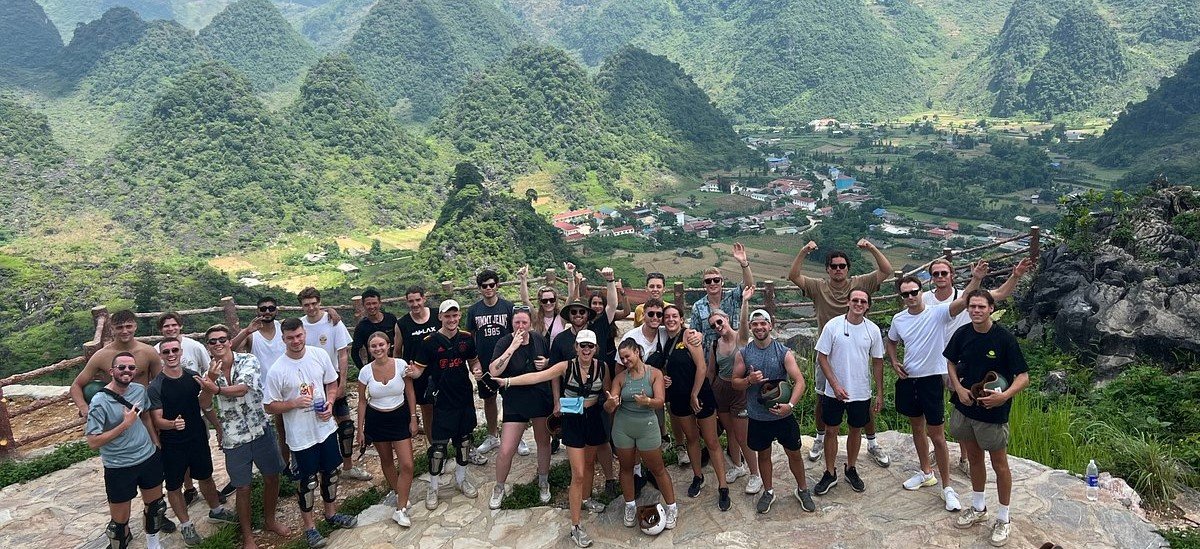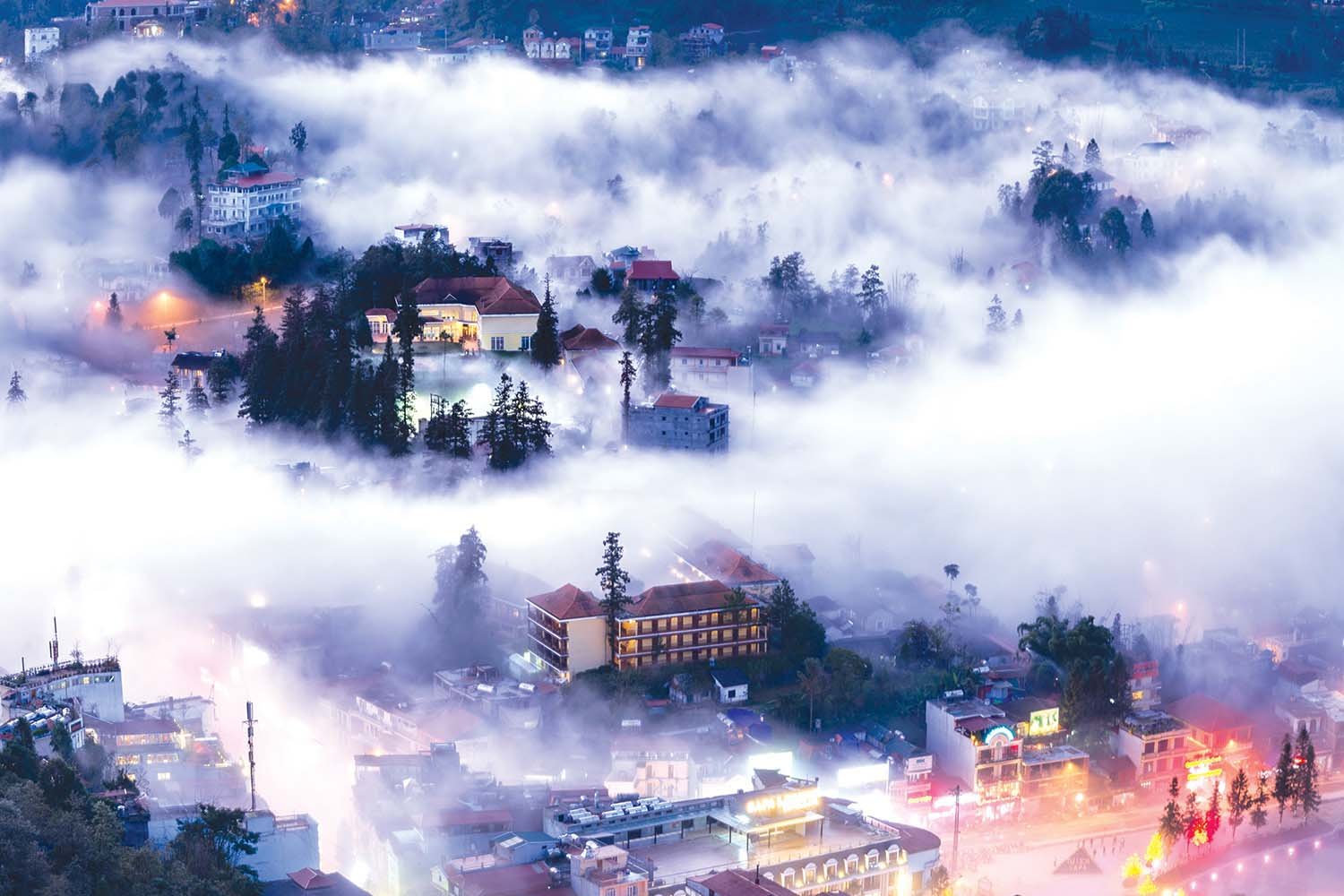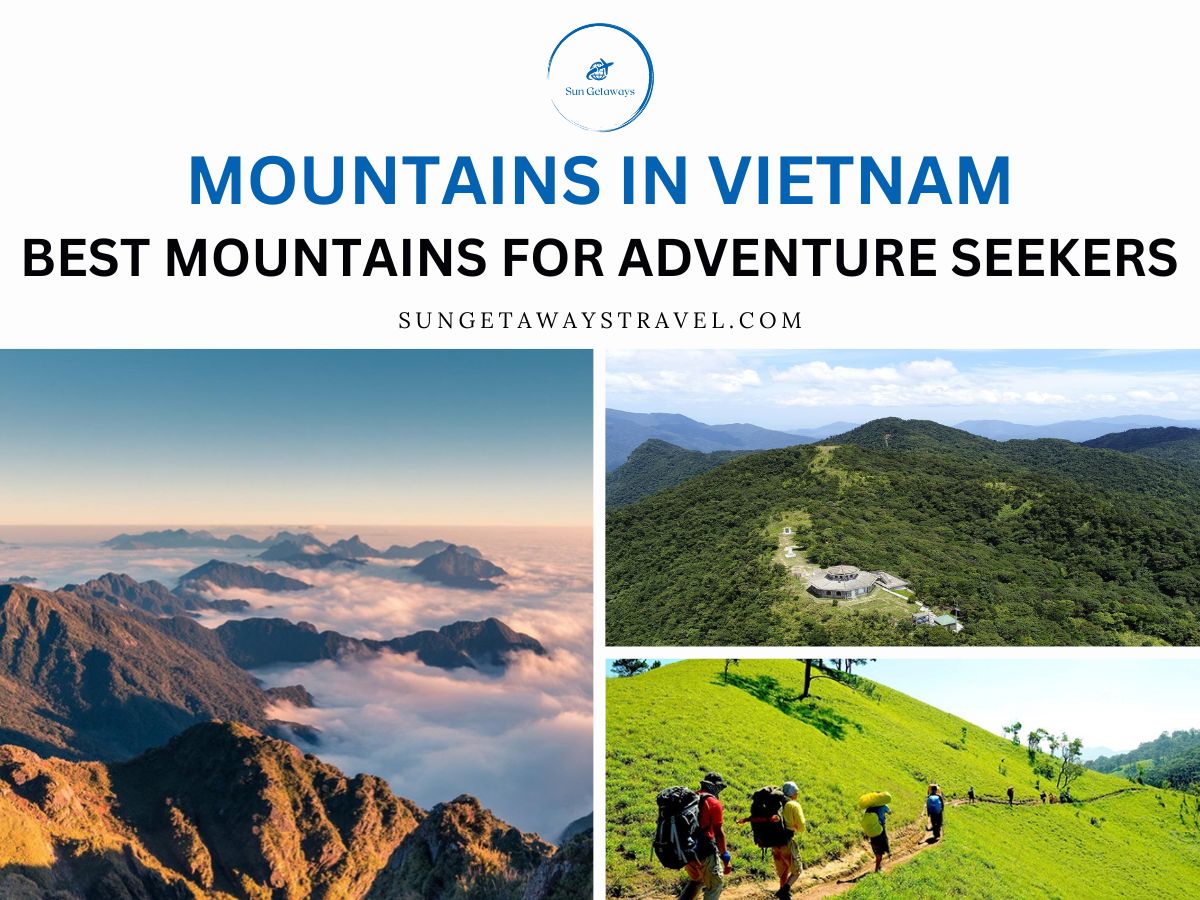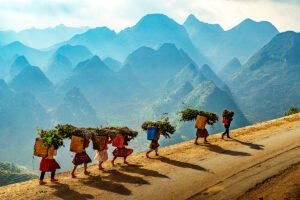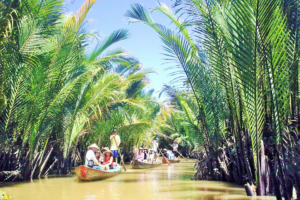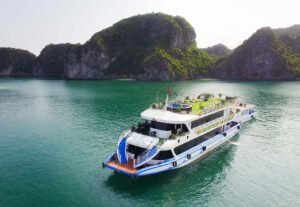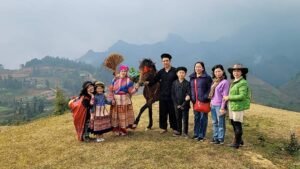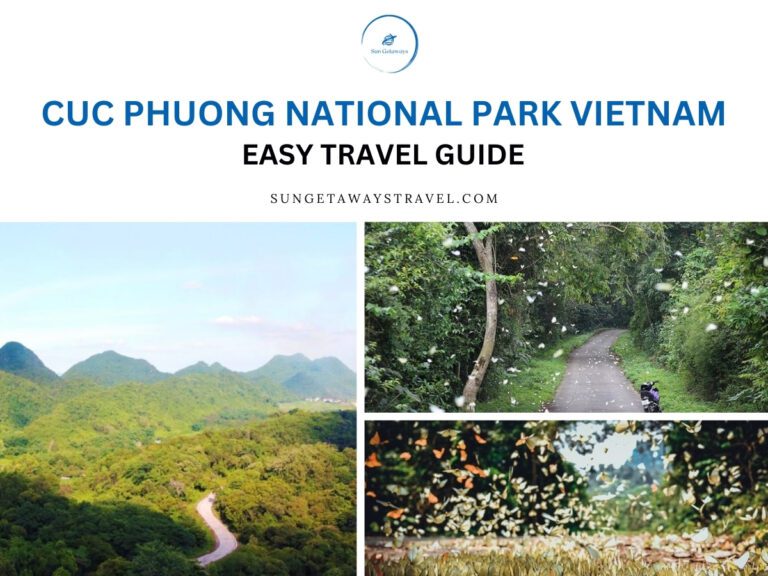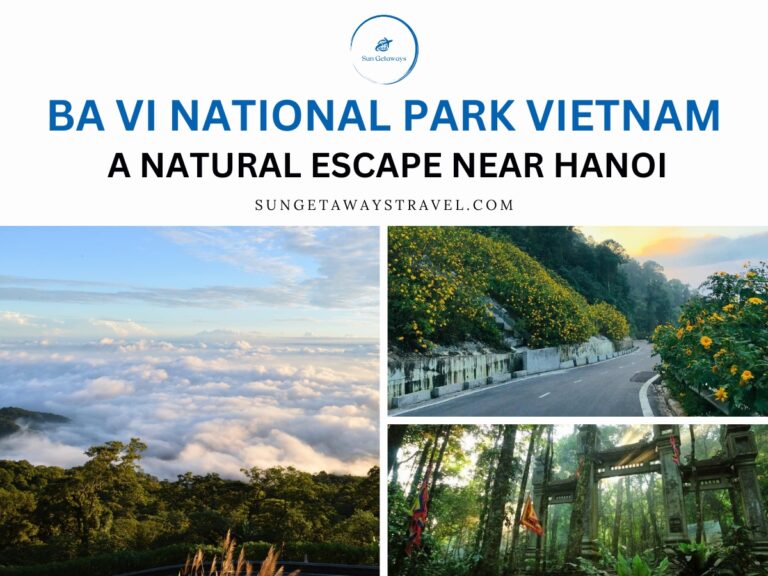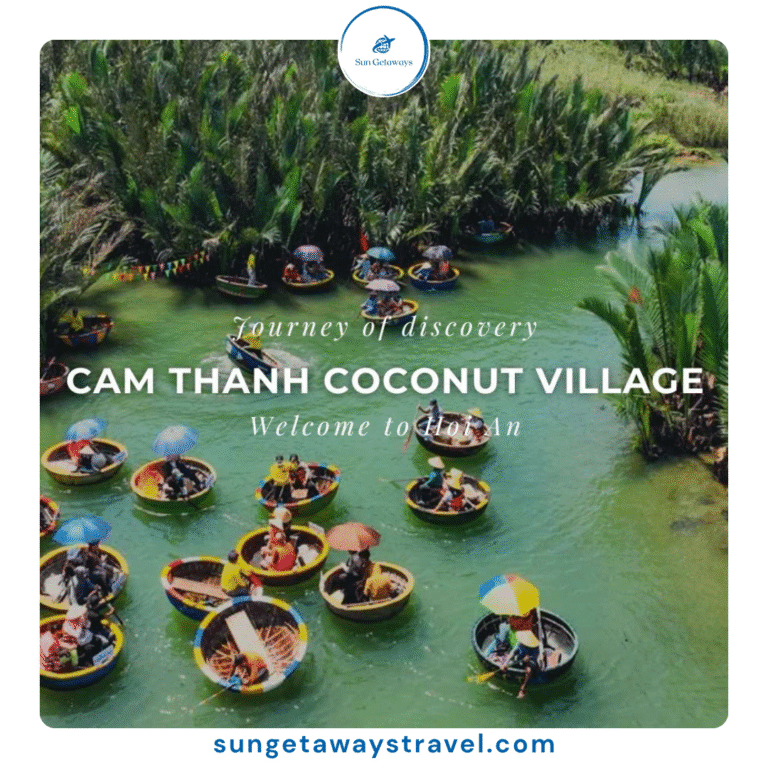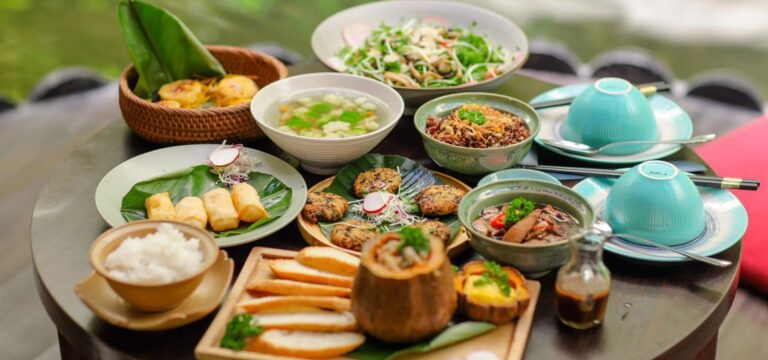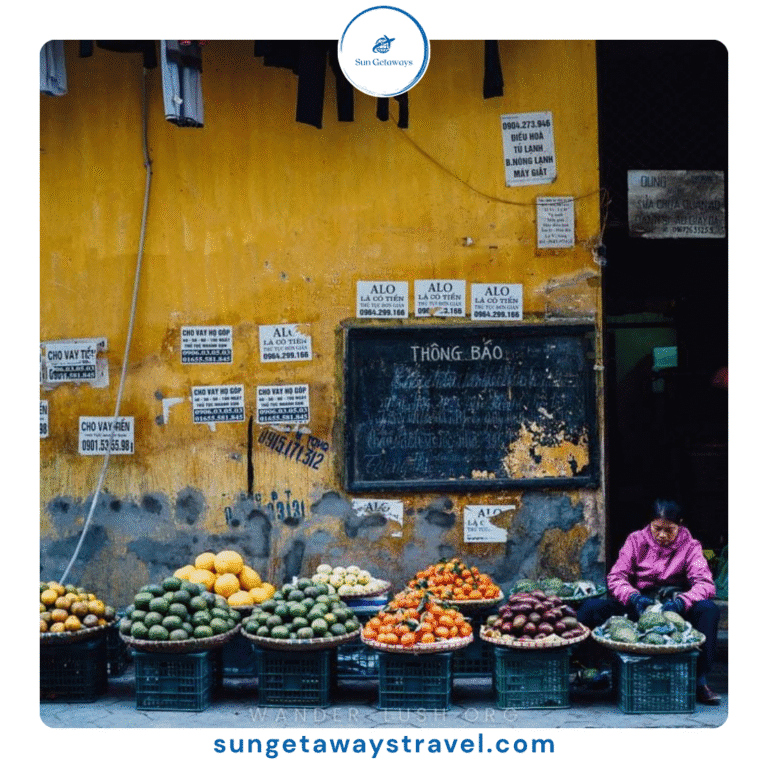Best mountain in Vietnam: Best Mountains for Adventure Seekers
 PhamDuong
PhamDuong Vietnam is a treasure trove of best mountain in Vietnam, offering breathtaking landscapes, rich biodiversity, and vibrant cultural heritage. From the soaring peaks of the north to the highlands of the central region and the lush mountains of the south, adventures await trekkers of all levels. This guide explores the best mountain to climb in Vietnam, with tips on trekking routes, seasonal conditions, and cultural highlights. Whether you are a first-time visitor or an experienced trekker, these mountains promise unforgettable experiences.
1. Geographical Highlights of Vietnam’s Mountains
1.1. Northern Mountains
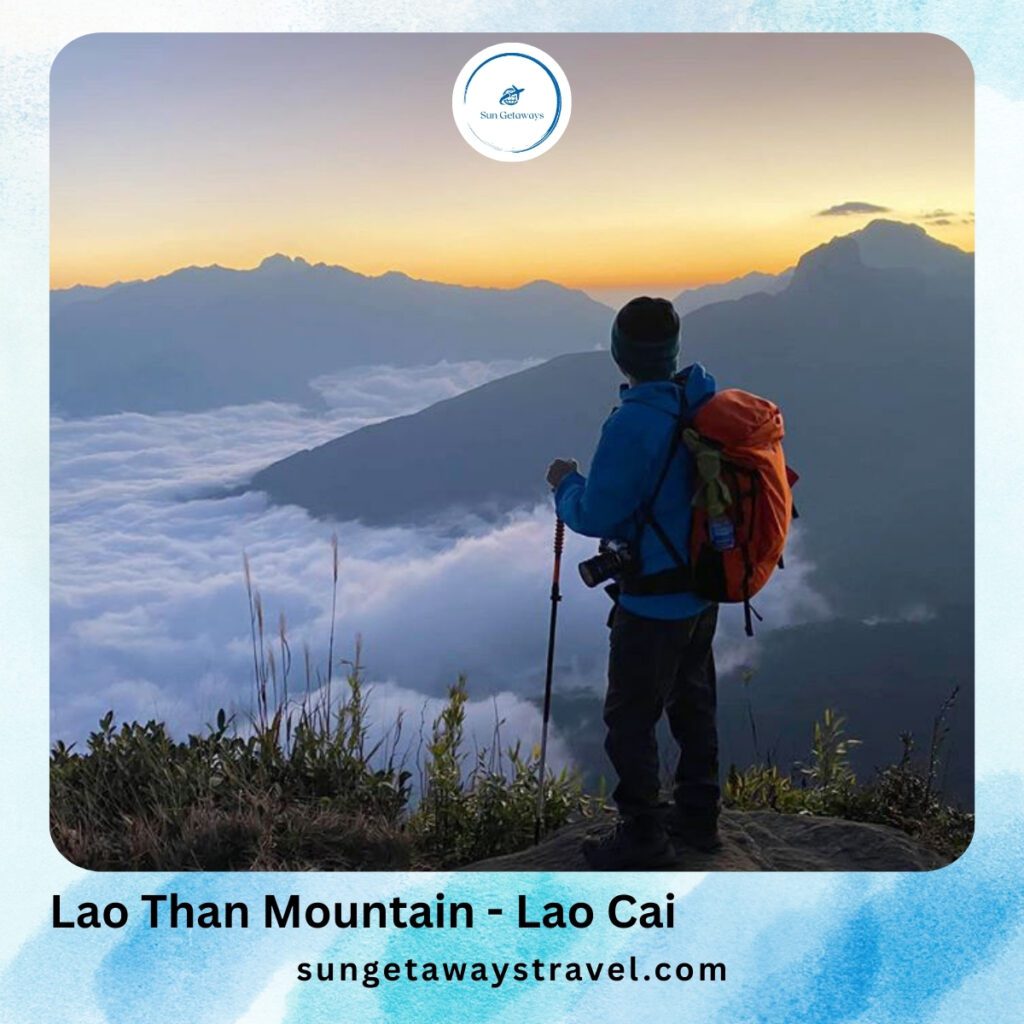

The northern region of Vietnam is home to the tallest peaks in the country, including Fansipan and Bach Moc Luong Tu. These mountains are characterized by rugged ridges, terraced rice fields, and mist – covered forests, creating iconic landscapes.
The diverse terrain offers both adventure and breathtaking views, making this area central to trekking activities. Northern mountains in Vietnam also host unique flora and fauna, adding ecological richness to the trekking experience.
1.2. Central Mountains
Central Vietnam features mountainous areas such as Ba Na Hills, Lang Biang, and Bach Ma, known for their lush forests, waterfalls, and rolling highlands. These peaks are lower than the northern giants but offer spectacular scenic diversity and easier trekking options.
The region enjoys a mild climate, which allows year – round exploration of mountains in Vietnam. Photographers and nature lovers find the combination of greenery, flowers, and panoramic viewpoints particularly appealing.
1.3. Southern Mountains
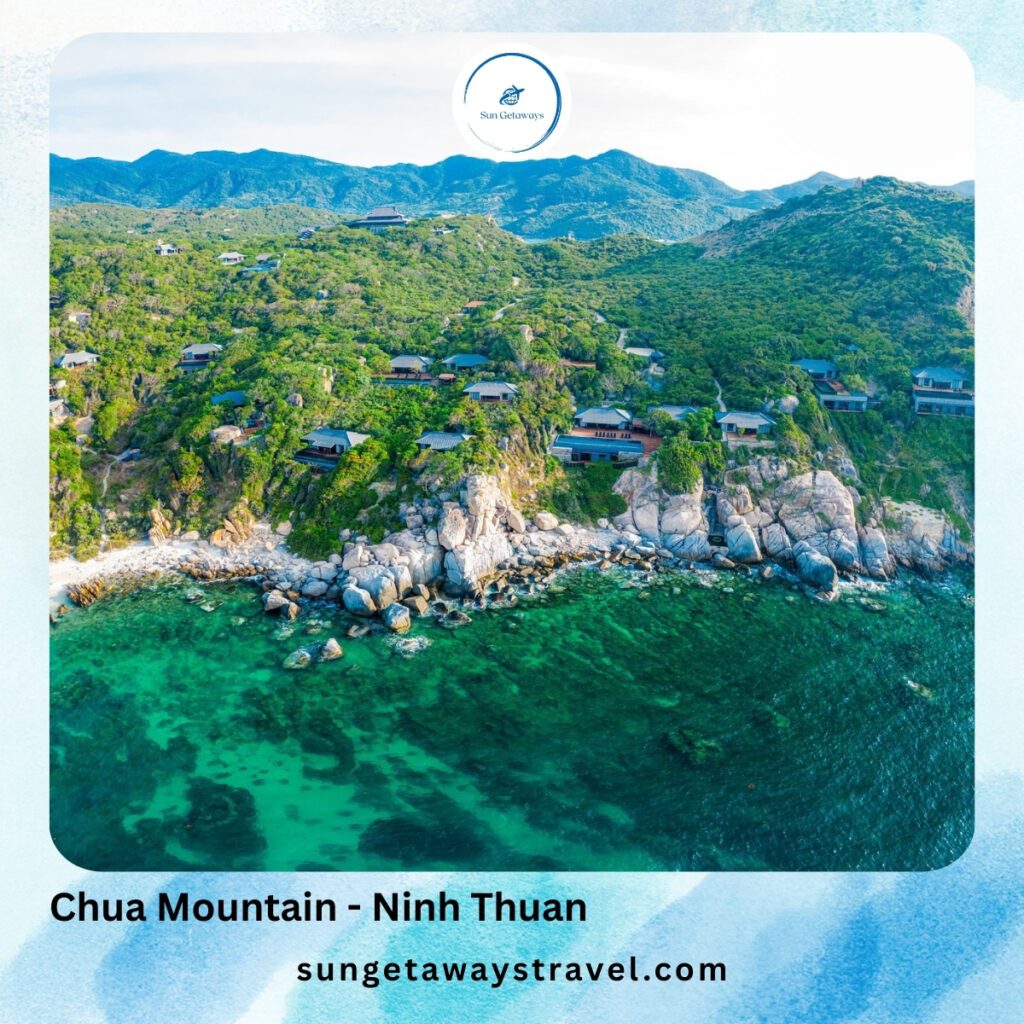

Southern mountains, including Chua Mountain and Ba Den Mountain, are covered with tropical rainforests and dotted with rivers and valleys. The terrain is ideal for multi – day treks or moderate hikes, offering a more relaxed experience compared to northern peaks.
These mountains in Vietnam provide opportunities to explore tropical biodiversity and connect with local Raglai and other indigenous communities. Their diverse ecosystems make them attractive destinations for trekkers and ecotourism enthusiasts.
2. Why Vietnam’s Mountains Are Important
2.1. Ecological Significance
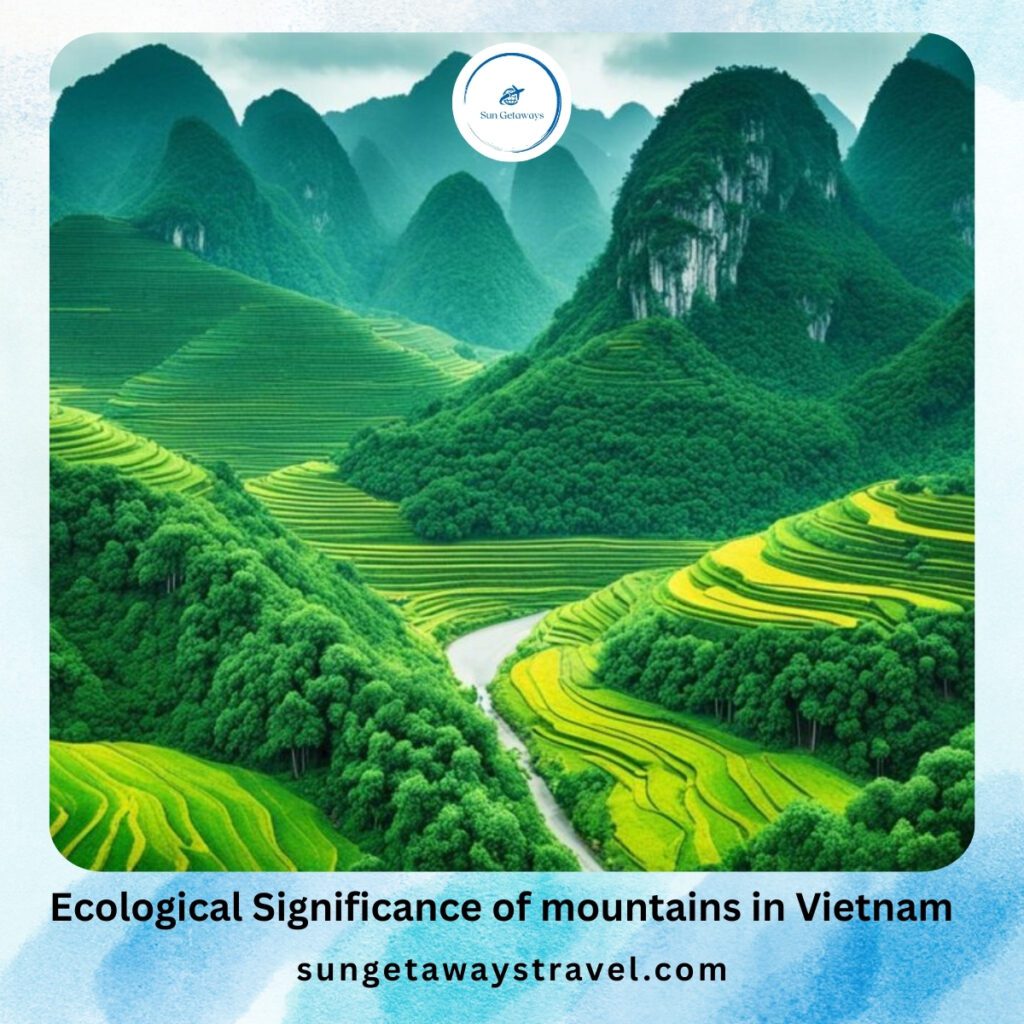

Mountains in Vietnam are crucial for maintaining ecological balance and preserving biodiversity. These regions harbor endemic plants, rare animals, and dense forests that provide habitats for wildlife.
Protecting mountains in Vietnam ensures that future trekkers can enjoy pristine landscapes and vibrant ecosystems. Exploring these areas responsibly allows trekkers to witness nature at its finest while contributing to conservation efforts.
2.2. Tourism and Adventure Value
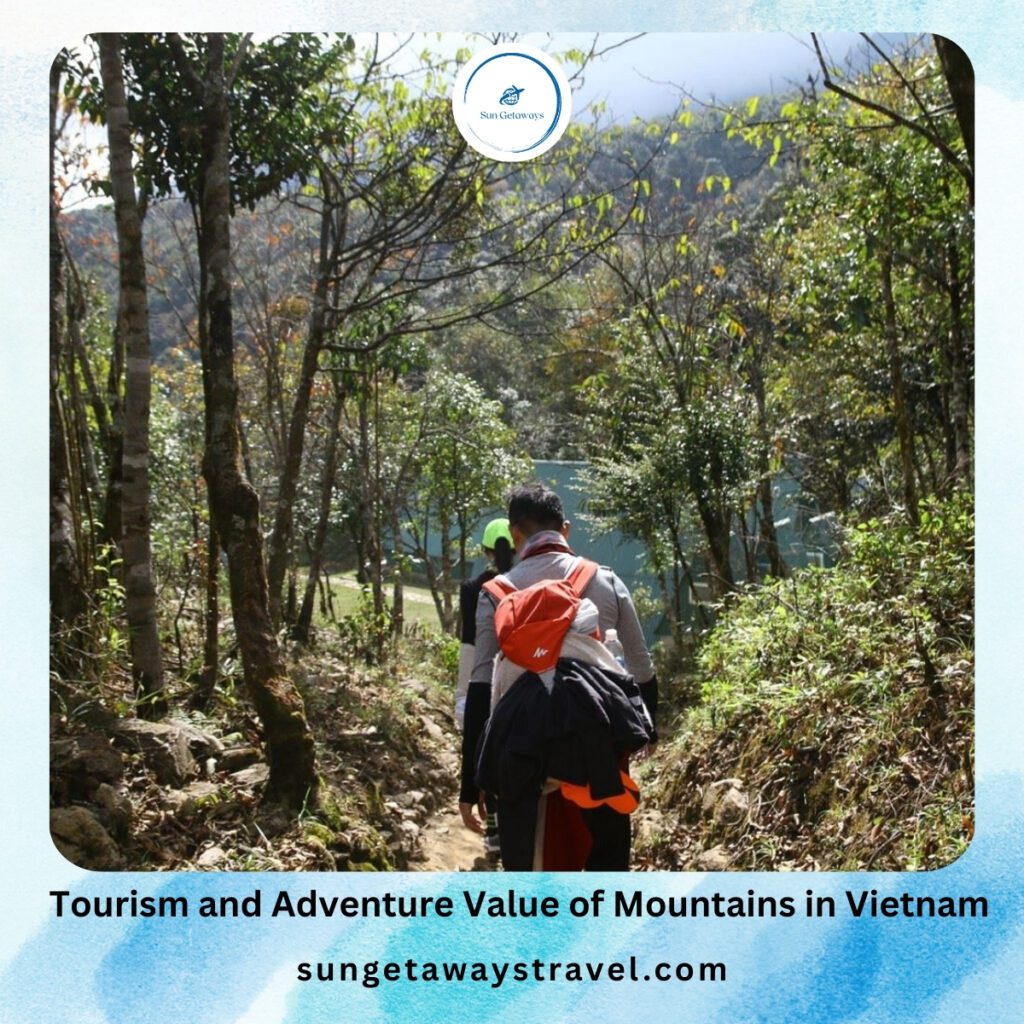

The best mountains to climb in Vietnam offer incredible opportunities for adventure tourism. From challenging peaks in the north to scenic hills in the south, trekking these mountains provides both physical exercise and mental relaxation.
Visitors can experience breathtaking views, take part in wellness activities, and capture stunning photography. Mountains in Vietnam attract both local and international travelers seeking memorable outdoor experiences.
2.3. Cultural Traditions and Ethnic Communities
Many mountains in Vietnam, such as Yen Tu, Ba Na Hills, and Lang Biang, are rich in cultural heritage. They are home to ethnic communities like H’mong, Dao, K’Ho, and Raglai, who maintain unique traditions, festivals, and crafts.
Trekking the best mountains to climb in Vietnam allows visitors to learn about local clothing, rituals, and legends. This combination of adventure and culture makes trekking in Vietnam a truly immersive experience..
2.4. Interaction with Locals
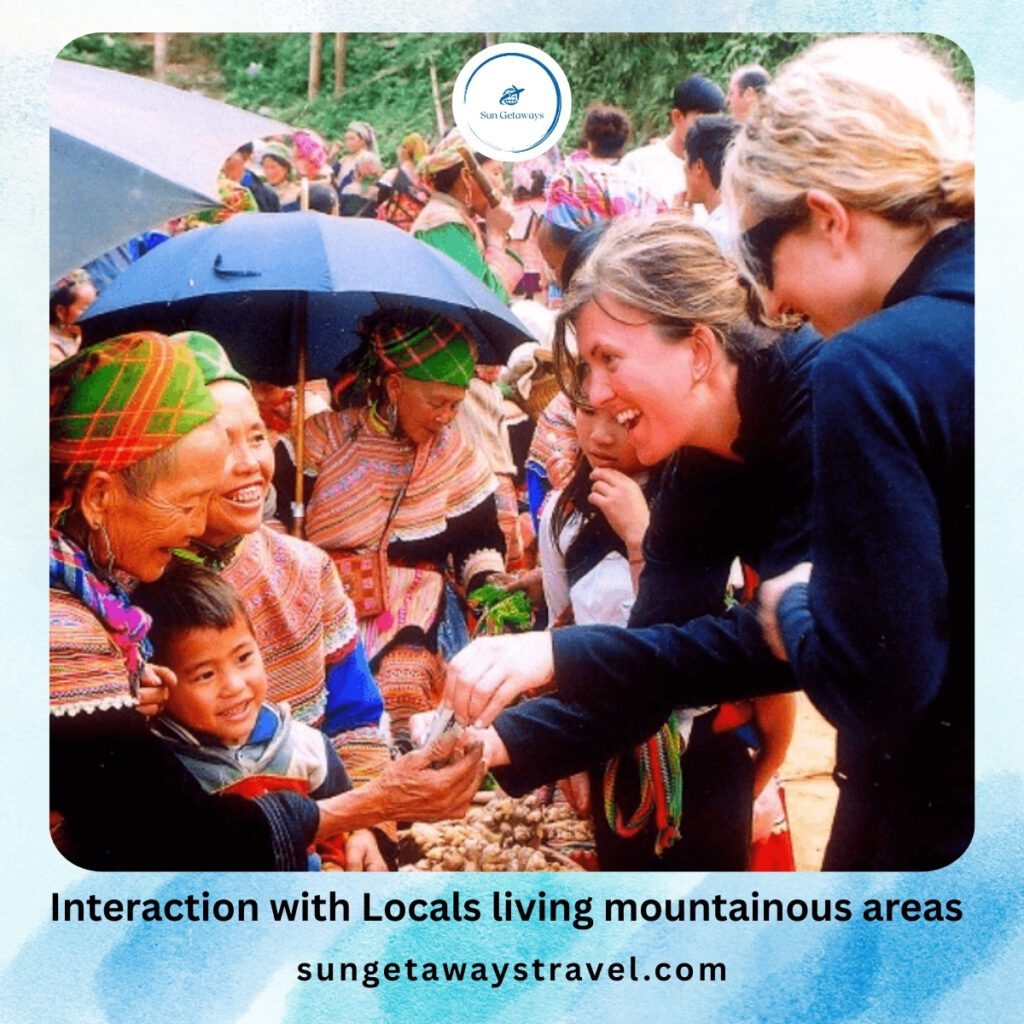

Engaging with local communities while exploring mountains in Vietnam enhances the overall journey. Travelers can purchase handmade crafts, participate in local ceremonies, or learn traditional practices, all while respecting customs and privacy.
Conscious interaction supports the economy of these mountainous regions and promotes sustainable tourism. trekkers on the best mountains to climb in Vietnam benefit from authentic cultural encounters alongside natural beauty.
3. Top 10 Mountains in Vietnam
3.1. Fansipan – The Roof of Indochina (North)
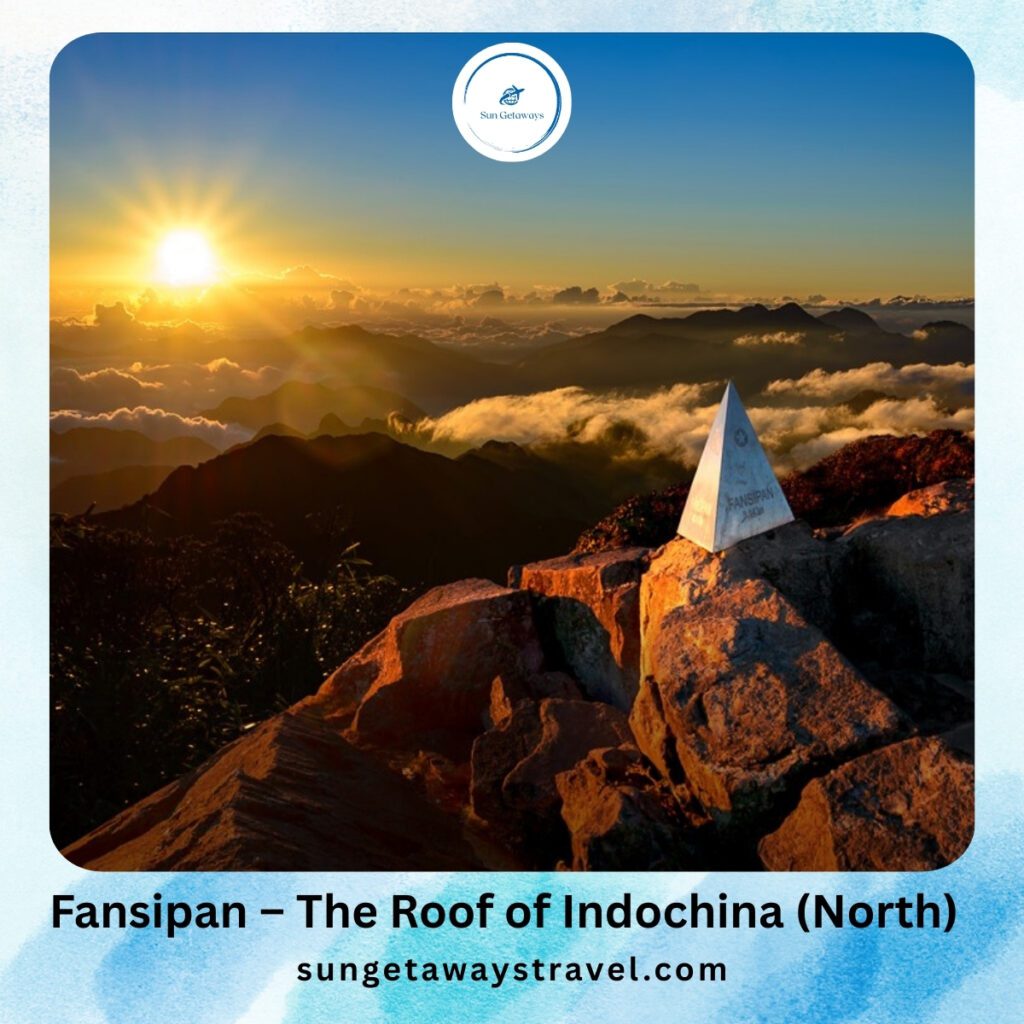

Fansipan, known as the “Roof of Indochina,” stands at 3,143 meters near Sapa in Lao Cai Province and is the ultimate trekking challenge in Vietnam. Multi – day routes (2 – 3 days) take trekkers through terraced rice fields, bamboo forests, and rugged slopes, testing both endurance and determination.
Along the trail, trekkers pass through H’Mong and Dao villages, adding a rich cultural dimension to the journey. Mornings on the mountain reward trekkers with breathtaking sunrises above a sea of clouds, making every step worthwhile. Whether for the challenge or the scenery, Fansipan remains one of the most rewarding trekking destinations in Vietnam.
For those interested in exploring Vietnam’s breathtaking landscapes and authentic local life, consider the 10-day Ha Giang Authentic Trekking tour.
3.2. Bach Moc Luong Tu Mountain (North)
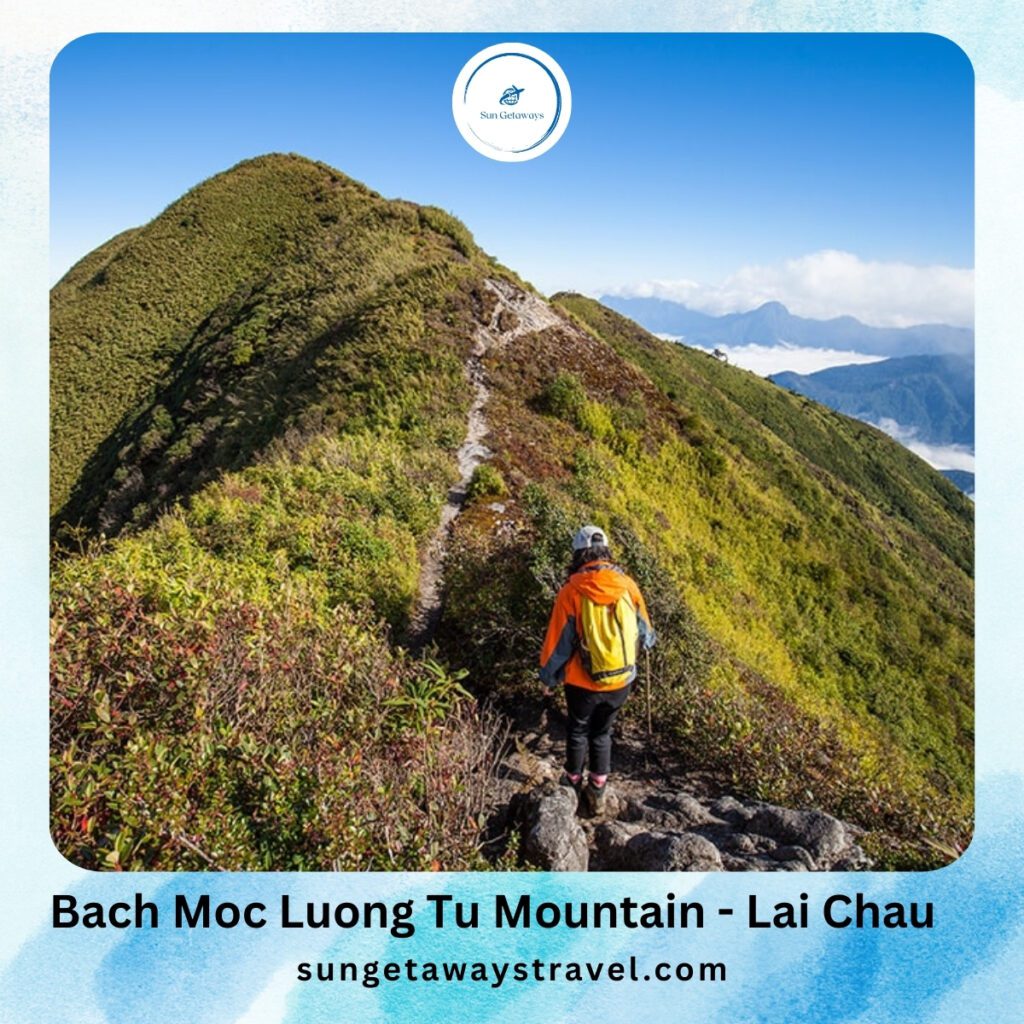

Nestled in Lai Chau Province, Bach Moc Luong Tu is one of the most remote and challenging peaks in Northern Vietnam. At 3,046 meters, it demands serious trekking skills, making it perfect for experienced trekkers exploring the best mountains to climb in Vietnam.
The route winds through dense forests, misty valleys, and narrow ridges. Clouds often wrap the peak, creating a mystical landscape ideal for photographers. Hiring a local guide is recommended for safety, and trekkers should bring sufficient supplies for the multi-day journey. This mountain rewards those who seek solitude and unspoiled natural beauty.
3.3. Yen Tu Mountain (North)
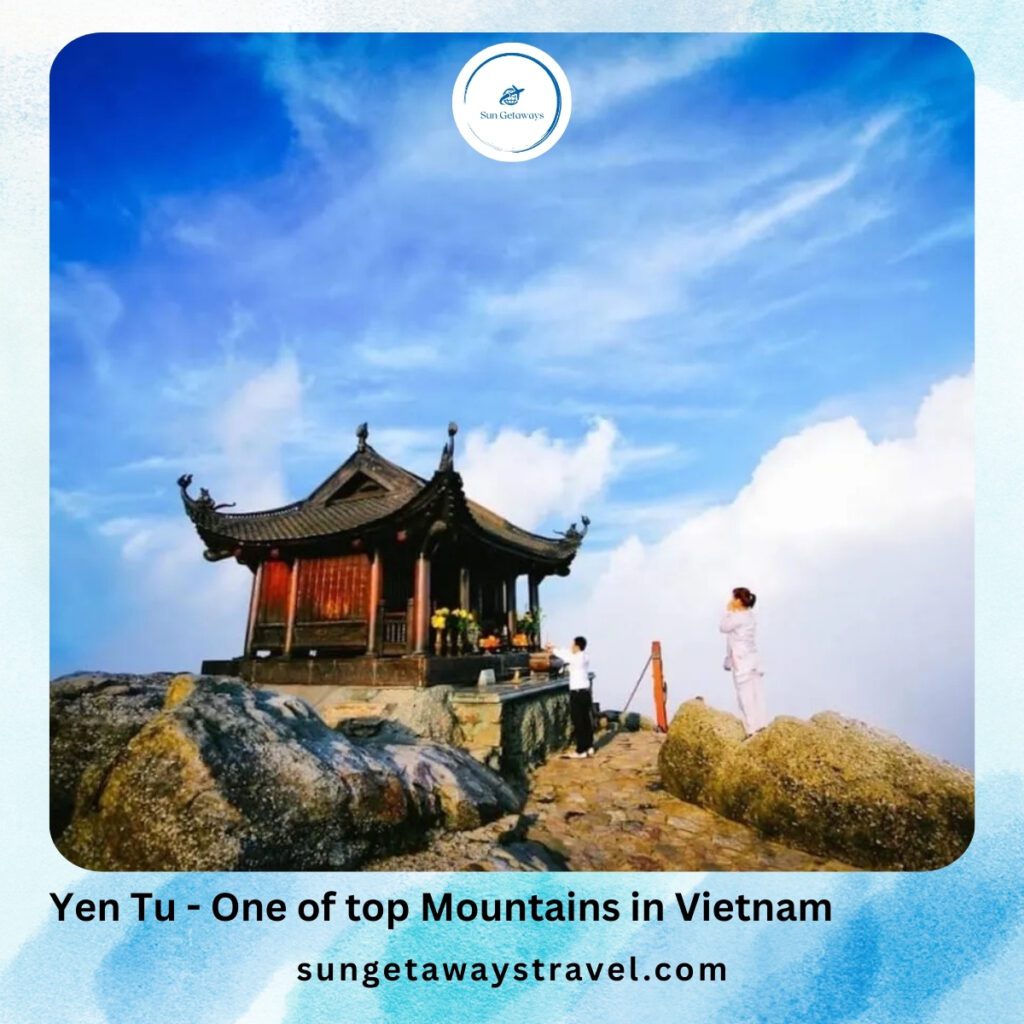

Located in Quang Ninh Province, Yen Tu Mountain rises 1,068 meters and is revered as the cradle of Vietnamese Buddhism. Unlike many other peaks, climbing Yen Tu is as much a spiritual pilgrimage as it is a physical challenge. The mountain is home to a chain of ancient pagodas, temples, and towers, with the iconic Dong Pagoda – Vietnam’s largest bronze pagoda – standing at the summit above the clouds.
Every spring, tens of thousands of pilgrims and visitors make the ascent during the Yen Tu Festival to pay respect and retrace the path once walked by King Tran Nhan Tong, who founded the Truc Lam Zen sect here in the 13th century. With its misty forests, sacred atmosphere, and deep historical significance, Yen Tu is not just a mountain to climb, but a journey into Vietnam’s spiritual heart.
3.4. Ta Xua – One of the best moutain in Vietnam
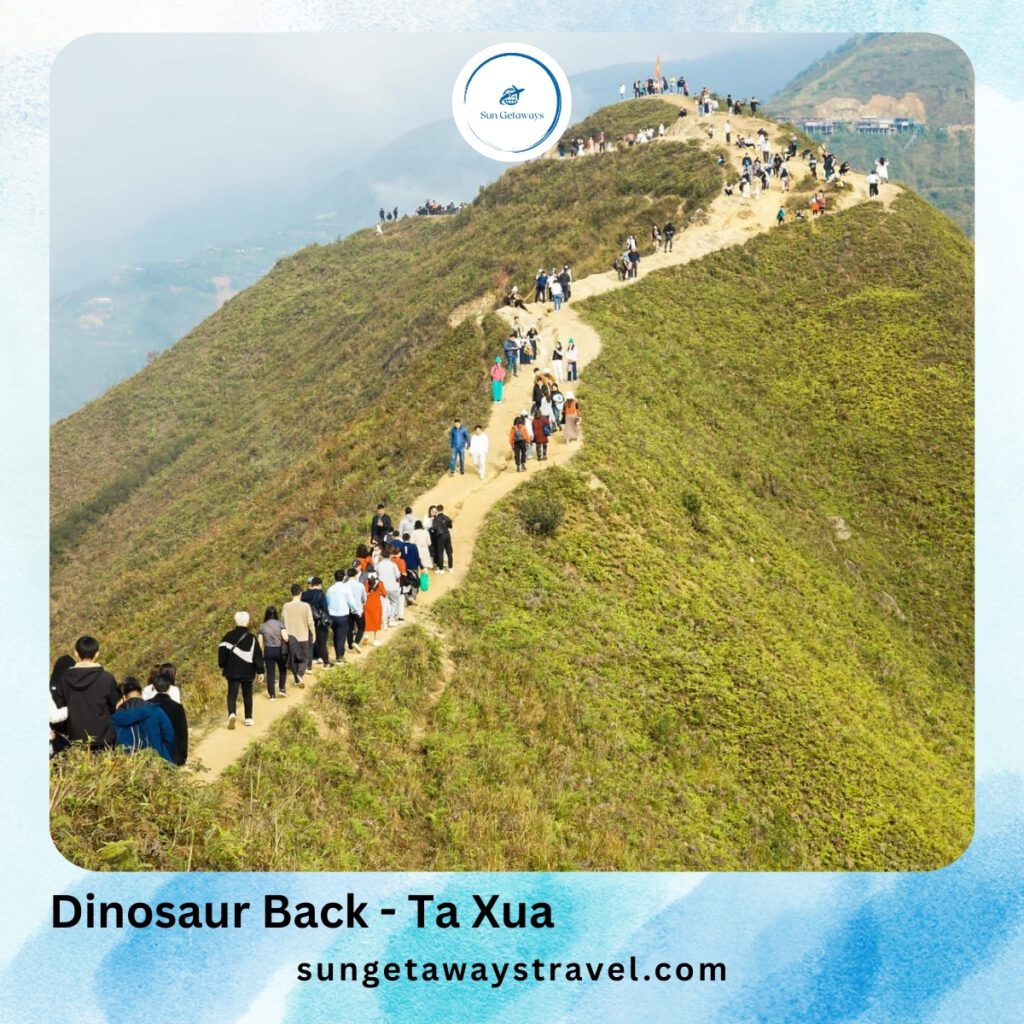

Ta Xua Mountain in Son La Province is famous for the “sea of clouds.” This natural spectacle attracts trekkers and photographers alike. Rising 2,865 meters, it offers multiple trekking paths with varying difficulty levels.
A highlight of the mountain is the Dinosaur Back (Sống Lưng Khủng Long). This rugged ridge resembles a dragon’s spine and provides panoramic views over misty valleys and lush forests. This unique formation makes Ta Xua a must-visit among the best mountains to climb in Vietnam.
Visiting between October and March ensures clear skies and the best chance to see clouds spilling dramatically over the ridges. Wildlife lovers can spot endemic birds and diverse vegetation along the trail. The mix of surreal landscapes, challenging climbs, and the iconic Dinosaur Back makes Ta Xua one of the most adventurous mountains in Vietnam.
3.5. Pu Luong Mountain
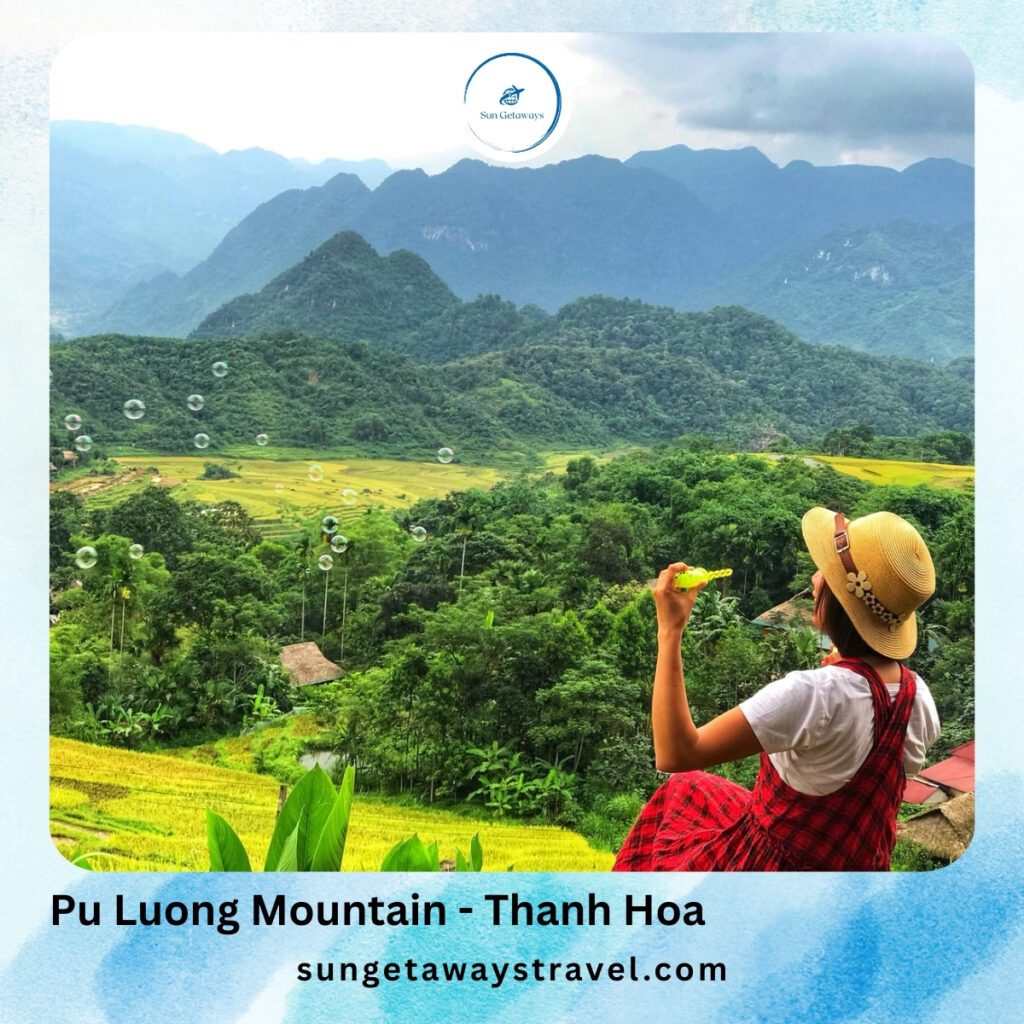

Pu Luong, located in Thanh Hoa Province, rises to around 1,700 meters and is renowned for its stunning terraced rice fields, dense forests, and traditional villages. Trekking here offers a mix of moderate to challenging trails through lush valleys, limestone cliffs, and bamboo groves, making it a favorite for trekkers seeking both natural beauty and cultural experiences.
Visitors can explore the local Thai ethnic villages, experiencing traditional crafts, stilt houses, and local cuisine. The combination of panoramic landscapes, quiet trails, and authentic mountain life makes Pu Luong one of the most rewarding destinations for trekking in Northern Vietnam. The best time to visit is from September to November when the rice terraces are golden and the weather is mild.
3.6. Lang Biang Mountain – One of the best moutains in Vietnam
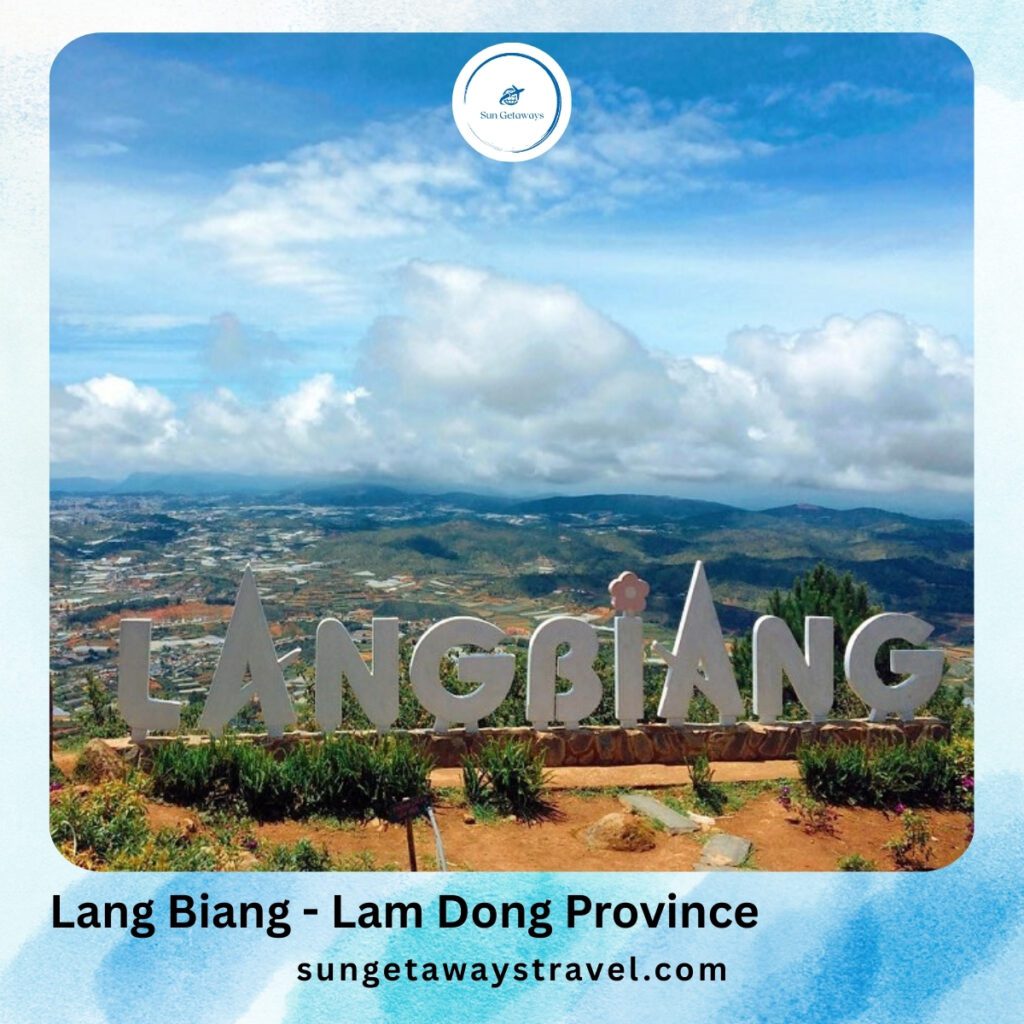

Located just 12 km from Da Lat in Lam Dong Province, Lang Biang rises 2,167 meters and is considered the roof of the Central Highlands. The mountain offers a mix of thrilling jeep rides and trekking routes through lush pine forests, vibrant wildflowers, and expansive valleys.
More than just a natural wonder, Lang Biang is deeply tied to the culture and legends of the K’Ho ethnic people, making it both a scenic and cultural journey. From its summit, visitors are treated to sweeping views of Da Lat’s dreamy landscapes – lakes, misty hills, and colorful flower farms. Best visited from November to April, Lang Biang stands out as one of the top climbs in Vietnam, blending Da Lat’s romantic charm with adventurous trekking experiences.
3.7. Ham Rong Mountain


Ham Rong Mountain, located in the heart of Sapa town in Lao Cai Province, rises modestly but offers spectacular panoramic views of the surrounding valley, terraced rice fields, and Fansipan peak. Trekking here is accessible for most visitors, with well-maintained paths, stone steps, and scenic viewpoints along the way.
The mountain is famous for its Botanical Garden, featuring colorful flowers, orchids, and bonsai, as well as traditional stone sculptures. Visitors can also explore caves and rocky outcrops, providing great photo opportunities. trekking Ham Rong combines natural beauty, cultural elements, and easy accessibility, making it a perfect introduction to the mountains of Northern Vietnam.
3.8. Bach Ma – One of the best moutain in Vietnam
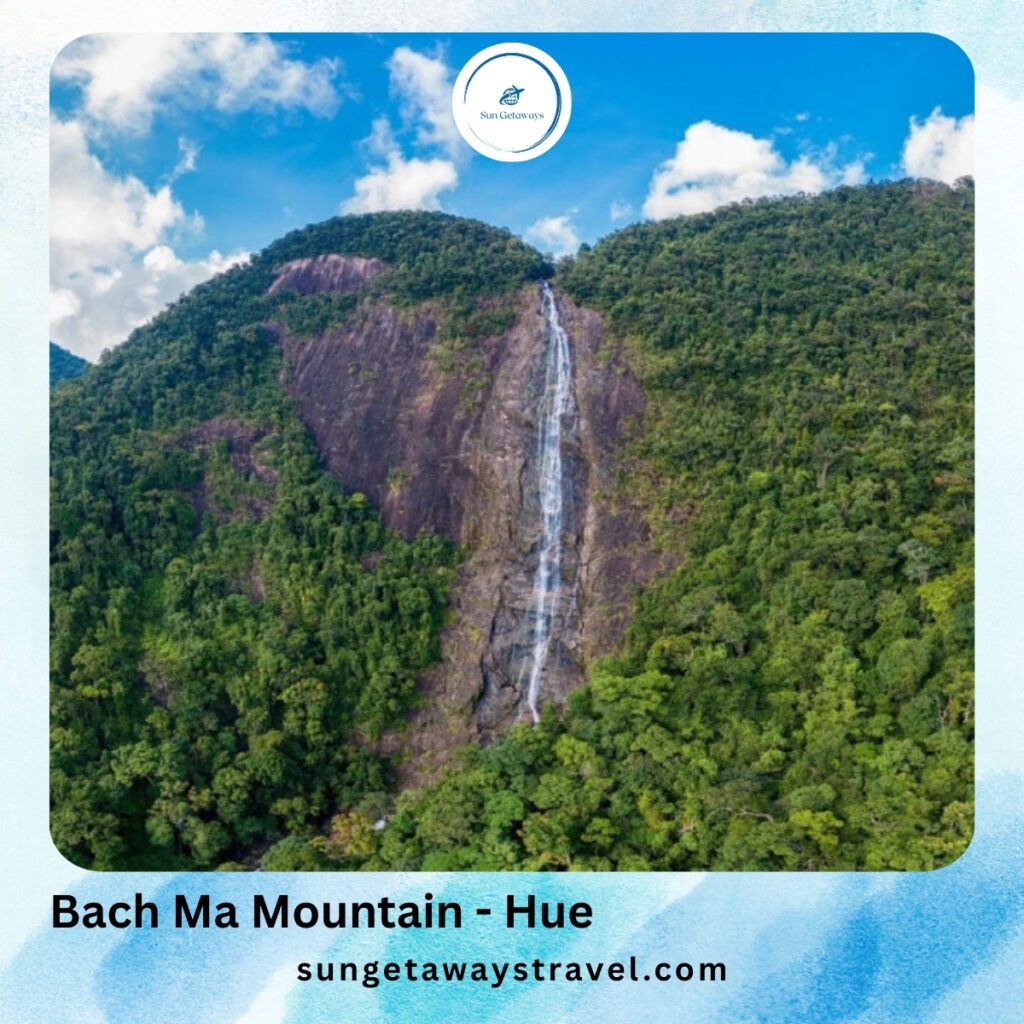

Bach Ma Mountain, in Thua Thien Hue Province, rises 1,450 meters and is famed not only for its misty peaks but also for its unique blend of history and nature. Once a French hill station, the mountain still preserves remnants of colonial villas scattered along its slopes, adding a cultural layer to its wild landscape.
trekkers are rewarded with spectacular highlights: the panoramic Hai Vong Dai viewpoint overlooking the sea, lagoons, and the Truong Son range; the majestic Do Quyen Waterfall, cascading over 300 meters and framed by blooming rhododendrons in spring; and a national park rich with rare plants and wildlife. With its mix of forest trails, historic charm, and breathtaking vistas, Bach Ma is one of the most remarkable mountains to climb in Central Vietnam.
3.9. Chua Mountain (South)
Chua Mountain in Ninh Thuan Province offers a striking contrast between desert landscapes and green mountain ridges. The peak is perfect for trekkers who enjoy varied terrain and panoramic ocean views.
Trekking here provides opportunities to observe rare flora and fauna unique to the semi-arid climate. Hikes are moderately challenging and best done in dry months from February to May. Chua Mountain stands out as one of the best mountains to climb in Vietnam for adventurous trekkers seeking diversity.
3.10. Ba Den Mountain (South)
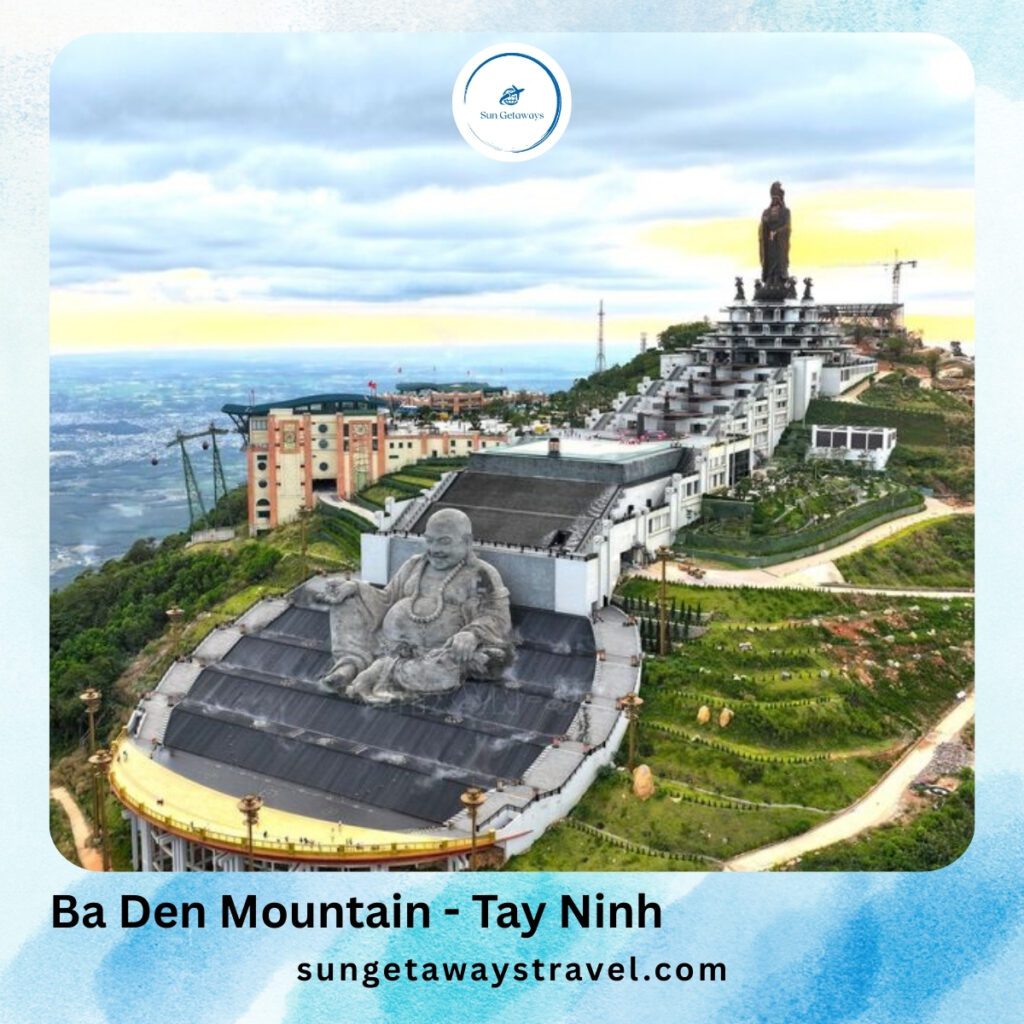

Ba Den Mountain, the highest mountain in Southern Vietnam at 986 meters, is located in Tay Ninh Province. Its relatively short yet steep trails attract both casual walkers and dedicated trekkers exploring mountains in Vietnam. The climb offers spectacular views over the Mekong Delta, making it one of the most rewarding hikes without the need for multi-day trekking. The best season is from November to April.
Beyond its natural beauty, Ba Den Mountain is also a spiritual landmark. Along the trails are several temples, with the highlight being the 72-meter-tall bronze Buddha statue – the tallest of its kind in Asia – which draws thousands of pilgrims and visitors each year.
👉 For more ideas on where to trek in this region, check out Southern Vietnam trekking routes that highlight both adventure and cultural experiences.
4. Best Time to Climb Mountains in Vietnam
4.1. Weather Overview by Region
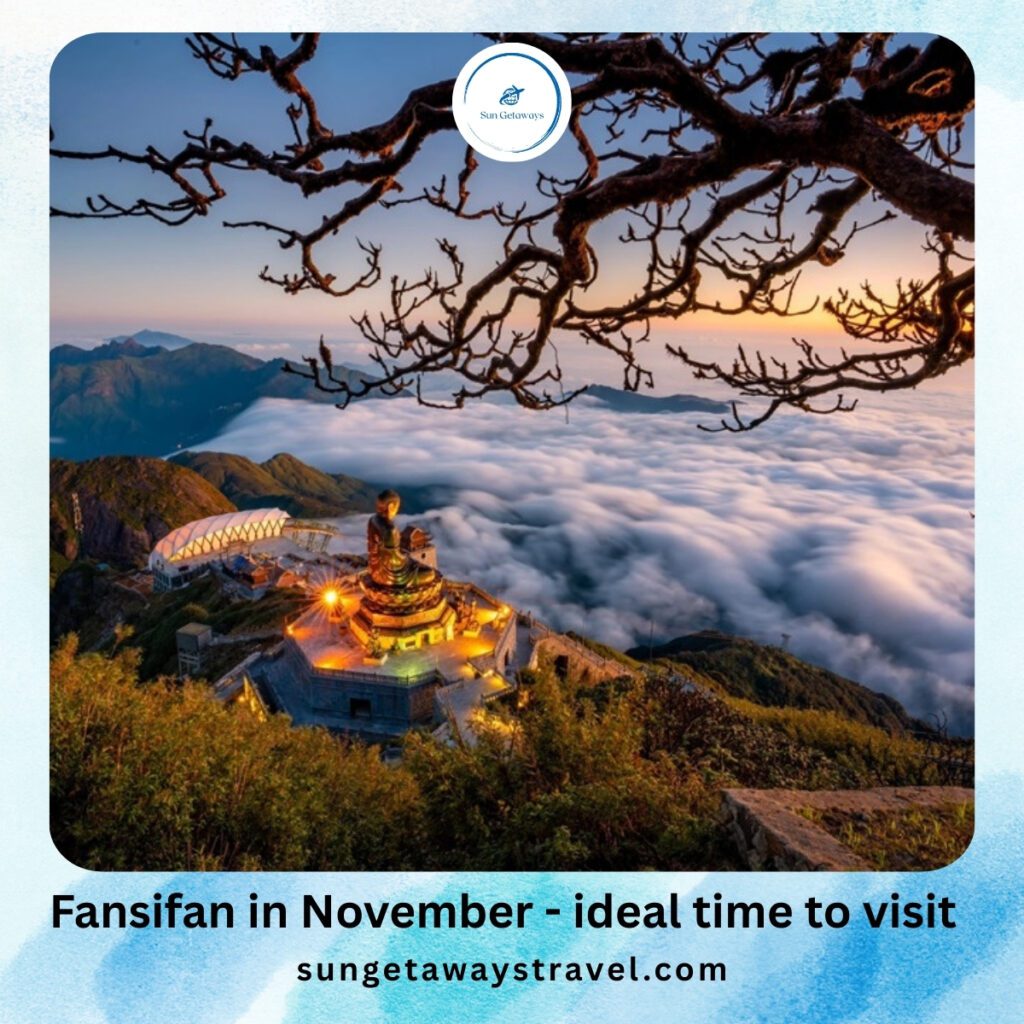

Northern, Central, and Southern Vietnam have different climates affecting the best trekking periods. Northern peaks like Fansipan are ideal from March – May or September – November, while Central highlands such as Ba Na Hills and Lang Biang are best from November – April.
4.2. Seasonal Recommendations for Top Mountains
Avoid the northern monsoon (June to August) and extreme heat in Central/Southern regions (May to September). Choosing the right season enhances safety, comfort, and scenic visibility on the best mountains to climb in Vietnam.
4.3. How Weather Affects Trekking Difficulty
Mist, clouds, or rain can obscure landscapes, making trails slippery or rivers harder to cross. Early mornings often reward trekkers with spectacular sunrises over valleys, offering unforgettable views.
5. Practical Tips for trekkers
5.1. Navigation and Communication
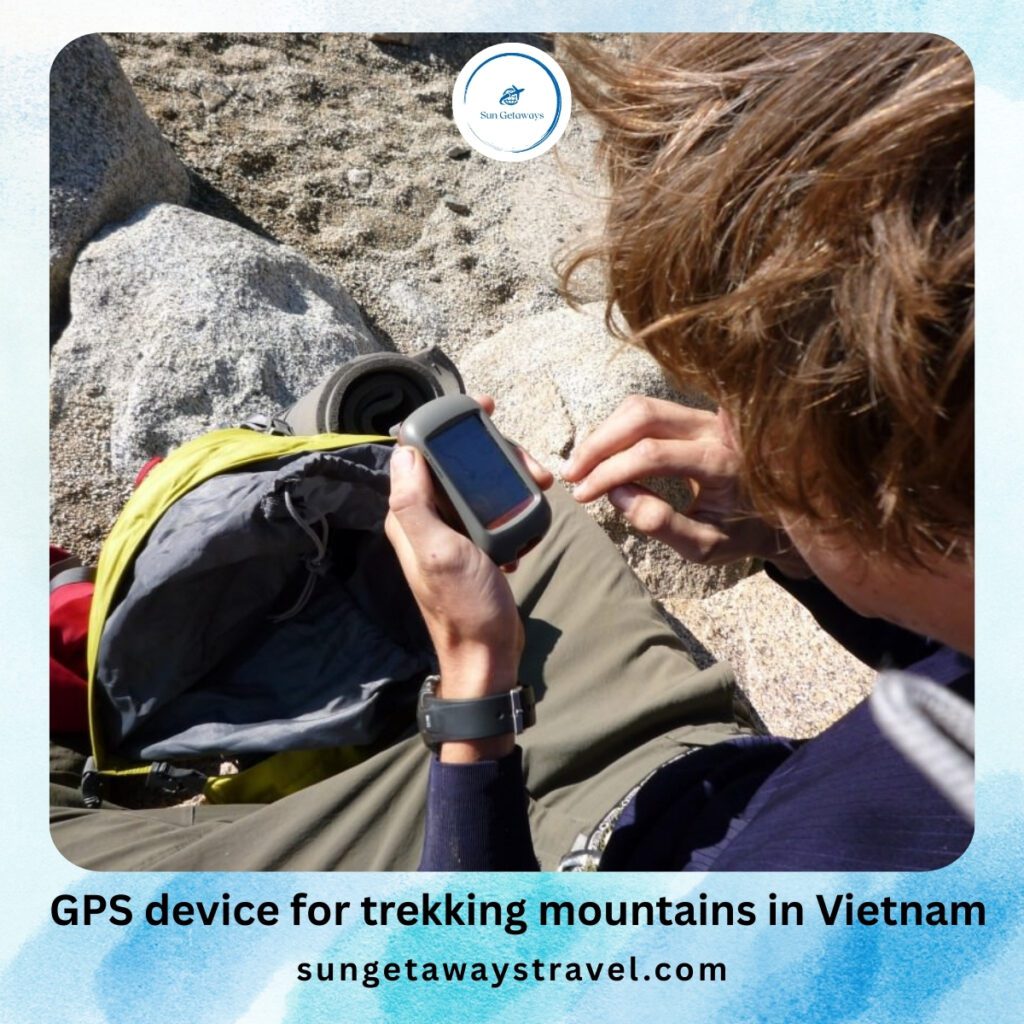

When trekking the mountains in Vietnam, preparing reliable navigation tools is essential. Carry a GPS device, physical maps, a local SIM card, or a satellite communication tool to stay oriented at all times.
Before each trekking leg, check signal coverage and plan communication with your group or local guide. For those exploring the best mountains to climb in Vietnam, proper navigation ensures safety and saves valuable time.
5.2. Food, Water, and trekking Gear
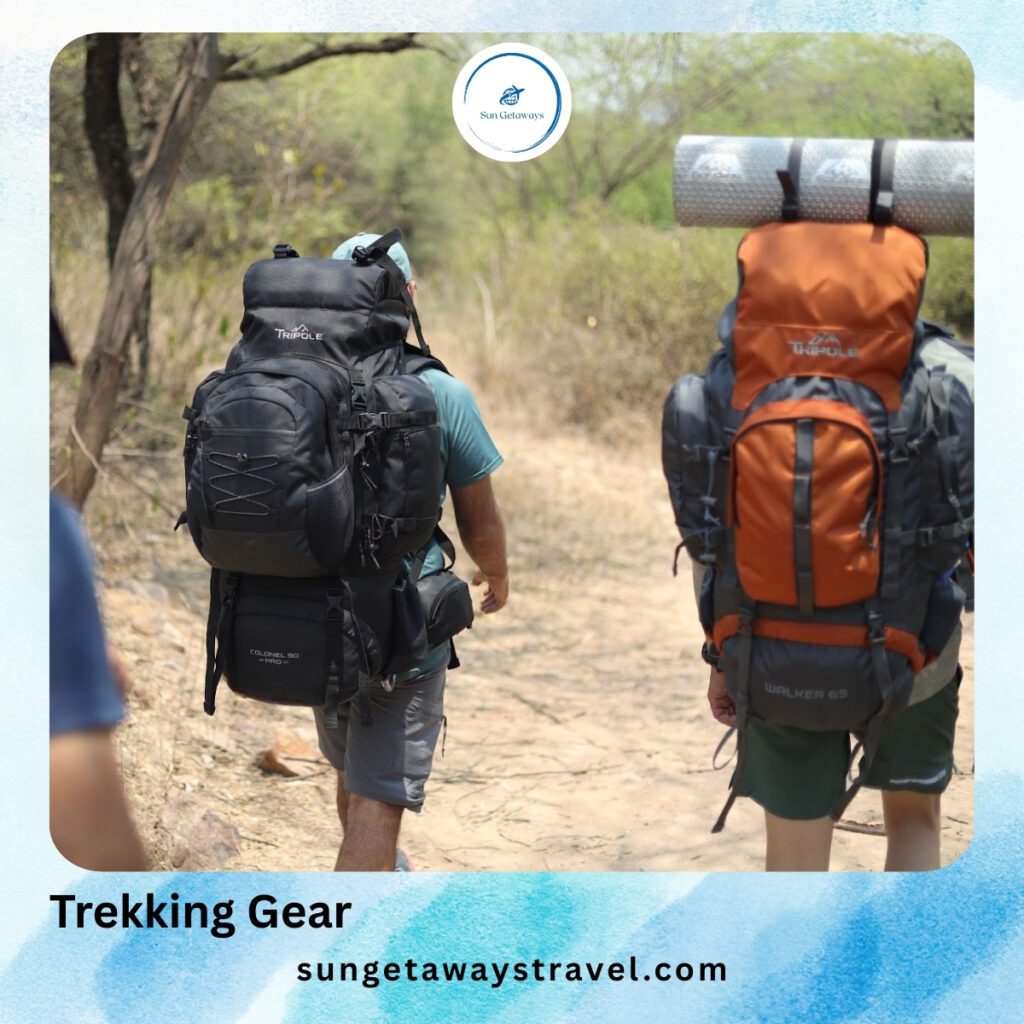

Bringing sufficient snacks, water, and essential trekking gear is key to a safe mountain adventure. Multi – day treks require large water bottles, portable and high – energy food, and a basic first – aid kit. Sturdy trekking boots, rain protection, trekking poles, and a quality backpack help trekkers conquer the varied terrain of mountains in Vietnam comfortably.
5.3. Multi – day Trekking Advice
Planning multi – day hikes requires careful route division and scheduled rest. Arrange overnight stays at local homestays, lodges, or camping sites to maintain energy. When trekking in groups, assign shared responsibilities, check gear, and pre – plan the route on the best mountains to climb in Vietnam for a smooth and safe journey.
5.4. Health, First Aid, and Emergency Preparedness
Preparing physically before climbing is crucial. Cardio exercises, endurance training, and health checks help trekkers cope with high altitudes and unpredictable weather. Carry a first – aid kit, personal medication, and know emergency escape routes when trekking on mountains in Vietnam to minimize risks.
👉 For more detailed safety guidelines and practical tips, check out this Vietnam trekking safety guide
5.5. Book Trekking Tours in Mountains in Vietnam
For travelers who prefer convenience and safety, booking a guided trekking tour is an excellent option. Local tour operators offer packages that include transportation, meals, experienced guides, and even homestay arrangements in ethnic minority villages.
This not only reduces the stress of planning but also provides cultural insights and environmental awareness during the journey. Many tours focus on the best mountains to climb in Vietnam, such as Fansipan, Ba Den Mountain. Choosing a reliable trekking company ensures a well – organized adventure while supporting local communities and sustainable tourism.
👉Find comprehensive trekking itineraries and practical tips, check out this Vietnam trekking guide.
6. Flora & Fauna of Mountains in Vietnam
6.1. Northern Mountains
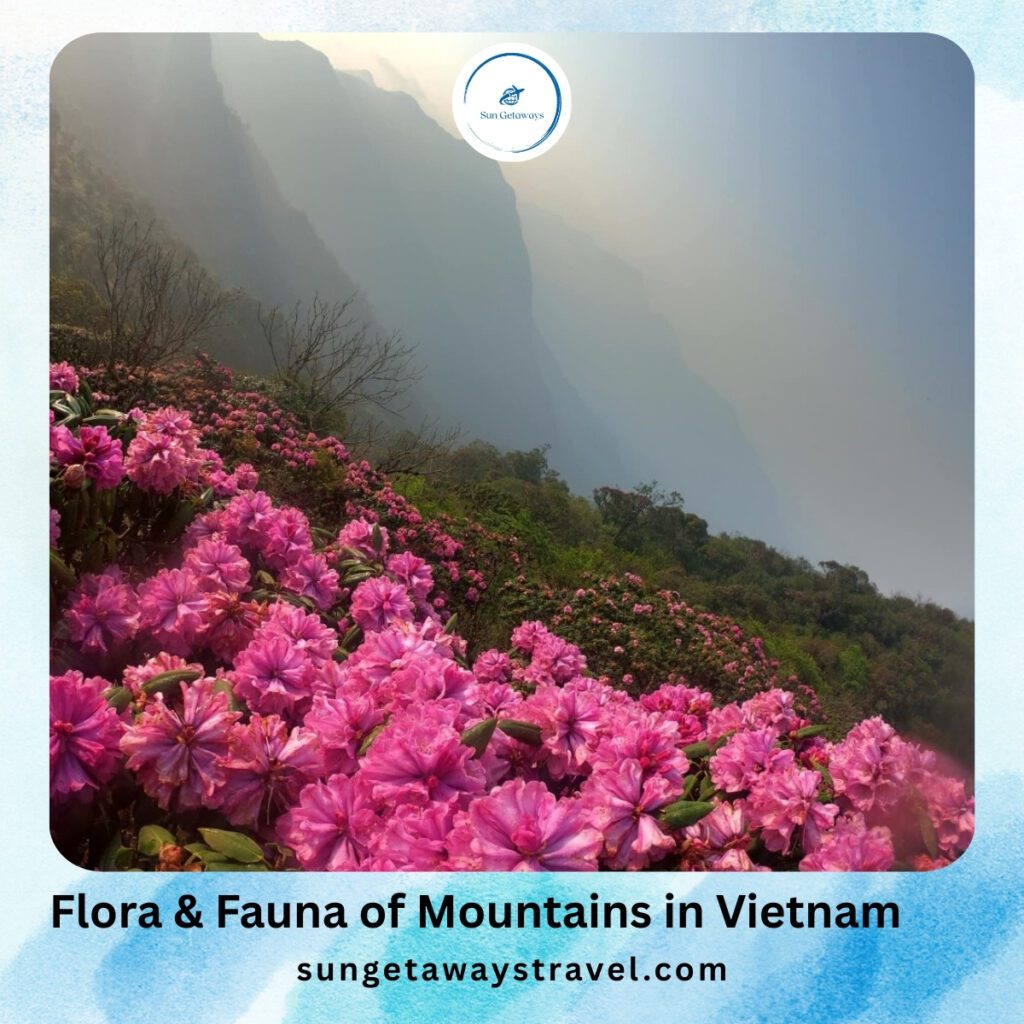

The northern ranges, including Fansipan and Bach Moc Luong Tu, are dominated by ancient pine, oak, and bamboo forests. In spring (February – March), entire hillsides are painted pink and purple with blooming Ban flowers, a signature of the Northwest.
These highlands are also home to black gibbons, muntjac deer, red – shanked douc langurs, and rare pheasants like the Siamese fireback. Trekkers may spot flocks of migratory birds resting along the ridges, making the region both scenic and biodiverse.
6.2. Central Mountains
Mountains in central Vietnam, such as Bach Ma and Lang Biang Mountain, thrive with tropical forests nurtured by year – round humidity. The slopes are carpeted with wild orchids, especially the striking Lan Hai Yến (Aerides) and Lan Kiếm (Cymbidium).
Birdwatchers will find species like the crested serpent eagle and hummingbird hawk – moths darting among the flowers. Hidden streams also shelter amphibians and colorful butterflies, turning each trek into a mini ecological expedition.
6.3. Southern Mountains
Southern peaks like Chua Mountain and Ba Den Mountain are covered in dense lowland rainforest. This ecosystem hosts long – tailed macaques, southern yellow – cheeked gibbons, and civets, as well as unique flora such as the fragrant champaca tree (Ngọc Lan rừng) and rare tropical orchids.
During the dry season (November to April), the forests echo with the calls of gibbons at dawn, a highlight for trekkers and photographers. Avoid the rainy months (May to September), when leeches and slippery trails make exploration more challenging.
7. Photography Tips for Vietnam’s Mountains
7.1. Best Angles and Golden Hours
- Sunrise (5:30 – 6:30 AM): Fansipan, Bach Moc Luong Tu, and Lang Biang are perfect for “sea of clouds” shots, where layers of mist roll across valleys.
- Sunset (4:30 – 6:00 PM): Ba Na Hills and Ba Den Mountain offer golden light with silhouettes of temples and forests.
- Pro tip: Arrive 30 – 45 minutes before sunrise or sunset to set up your tripod and secure the best viewing spots.
7.2. Equipment Tips
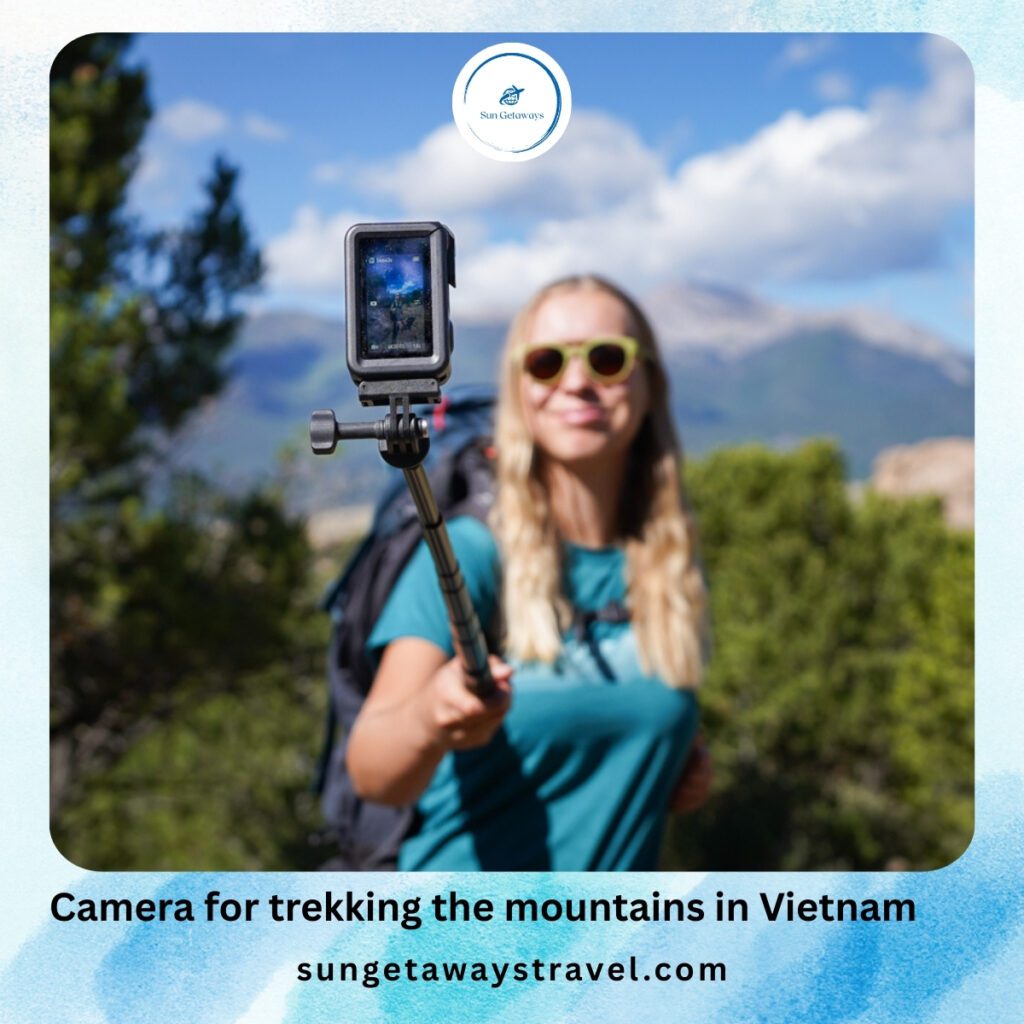

- Camera & Lenses: Wide-angle lenses capture panoramic ridges; telephoto lenses are great for wildlife at Bach Ma or Yen Tu.
- Tripod: Essential for low-light sunrise/sunset shots.
- Filters: Polarizers help control glare when shooting waterfalls like Do Quyen in Bach Ma.
- Smartphone photographers: Bring a power bank; mountain cold drains batteries quickly.
7.3. Scenic Subjects by Region
Northern regions feature terraced fields and misty mountain tops; central regions showcase forests and wildflowers; southern areas offer valleys and rivers. Adjust your shooting angles and timing according to regional highlights to capture the essence of mountains in Vietnam.
👉 If you need quick support, please contact us via Whatsapp for tailored advice.
8. Accommodation Options Near Vietnam’s Mountains
8.1. Northern best mountains in Vietnam
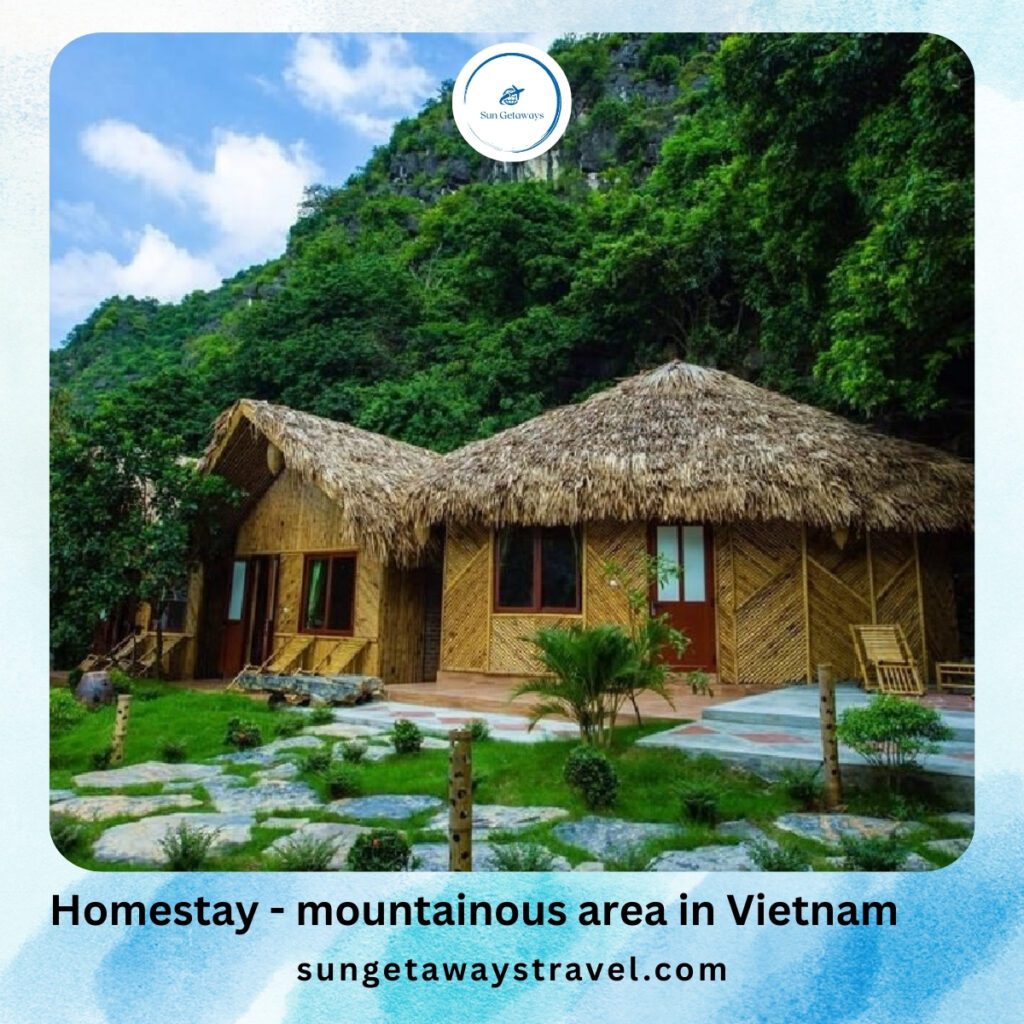

Around Sapa, Lao Cai, and Lai Chau, travelers can stay in ethnic minority homestays where families offer wooden stilt houses, home – cooked meals, and cultural experiences such as traditional music or weaving. This not only provides easy access to trails leading to Fansipan or Bach Moc Luong Tu but also an authentic taste of highland life. For more comfort, boutique mountain lodges and eco-friendly resorts offer heated rooms and panoramic views over terraced fields.
8.2. Central best mountains in Vietnam
Destinations like Ba Na Hills, Lang Biang, and Bach Ma are known for their eco – resorts, mountain villas, and forest lodges. At Lang Biang, visitors can camp under the stars by pine forests or stay in Da Lat’s cozy villas overlooking flower farms.
Bach Ma National Park provides forest guesthouses and park – managed lodges, allowing trekkers to wake up close to waterfalls and jungle trails. Advance booking is highly recommended during flower seasons and national holidays.
8.3. Southern best mountains in Vietnam
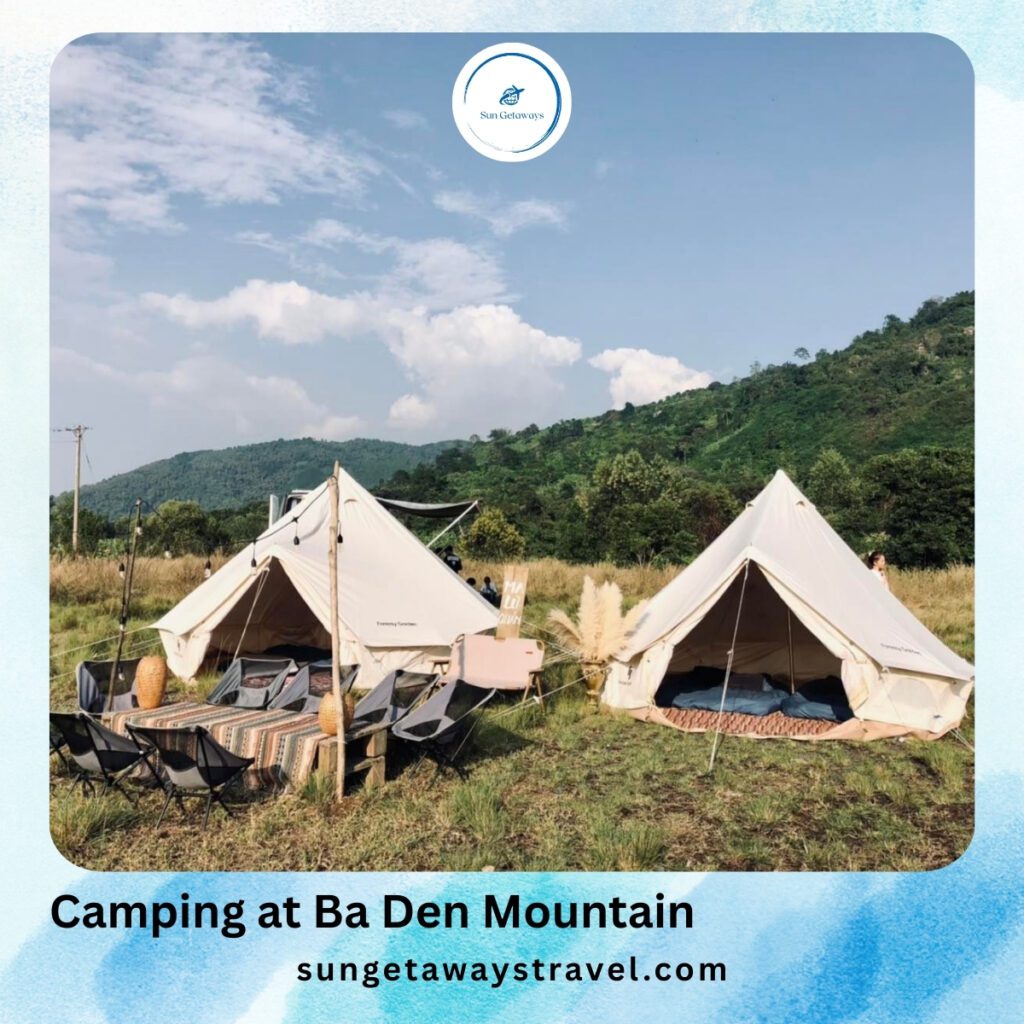

At Chua Mountain and Ba Den Mountain, camping at designated sites is a popular option for adventure seekers who want to experience sunrise right on the mountain. Alternatively, guesthouses and lodges near the mountain base offer a safer and more convenient choice, with local vegetarian restaurants nearby serving food for both trekkers and pilgrims.
Conclusion
Vietnam’s diverse landscapes make its mountains in Vietnam ideal for trekkers and adventure travelers. From the northern peaks like Fansipan to southern climbs such as Ba Den Mountain, each offers unique scenery, cultural experiences, and trekking challenges. By preparing carefully, choosing the right season, and respecting local communities, these mountains truly rank among the best mountains to climb in Vietnam for safe, memorable, and enriching adventures.
👉 To make the most of your mountain adventures, consider booking with Sun Getaways Travel, where you can design a customized tour to suit your exact travel style.
Ask a question
Leave a Comment (0)
No questions yet. Be the first to ask a question!


